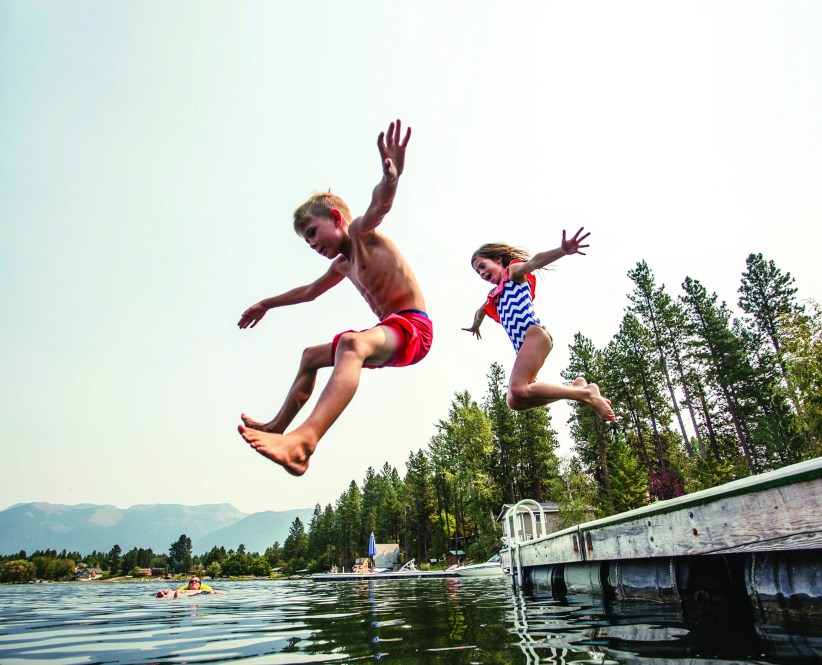There’s nothing better than swimming in a cool pool during the scorching days of summer. But parents can be forgiven for being wary after reading recent headlines about children who’ve died from a condition called secondary drowning—including a Texas toddler, Frankie Delgado, who lost his life a full week after getting knocked over by a wave at the beach.
How can this happen? And more importantly, how can parents make sure their little ones are safe after exiting the water?
While secondary and dry drowning make up only 1-2 percent of all drowning deaths, it’s important for parents to know the symptoms, because they can be life-threatening. Secondary drowning and dry drowning are two similar but technically different conditions that can affect anyone, although children are especially vulnerable. As the names imply, both affect their victims after they’ve left the pool, usually with no idea anything is wrong. Symptoms of dry drowning typically occur immediately after any incident in the water, while secondary drowning usually begins later, within one to 24 hours after exiting the water—but it can progress over one to two days, or, as in Frankie Delgado’s case, several days.
“Children are more prone to dry and secondary drowning because of their small size, stature and immature gag reflex,” says Robert Glatter, M.D., an emergency physician at Lenox Hill Hospital in Manhattan. Toddlers, especially, may be at heightened risk because they don’t know to keep their mouths closed or how to blow bubbles in the water.
Symptoms of Dry and Secondary Drowning
Secondary drowning happens when someone inadvertently swallows too much water and it goes into his lungs. Patients suffering from secondary drowning may feel tired after a short period in the water, have a dry cough, and complain of chest pain. These symptoms can progress over a longer period of time as the child loses oxygen in his blood, a condition known as hypoxia, according to Dr. Glatter. While many pools post rules prohibiting horseplay and dunking other people in the water, parents should emphasize this safety lesson to all children because just a few mouthfuls of water accidentally swallowed can lead to water entering the lungs.
Symptoms of dry drowning are much more profound and develop suddenly, with a spasm of the vocal cords causing them to snap shut. The child cannot get any air in or out and her breathing will sound high-pitched. Wheezing often occurs due to a blockage in the airway and she may turn blue as well. “This child should be taken to the emergency room immediately so that he or she does not asphyxiate,” Dr. Glatter says.
Treatment of Dry and Secondary Drowning
While there are no medications for secondary or dry drowning, the treatment is close observation. If necessary, a breathing tube may have to be inserted if oxygen levels drop. Parents should keep a close eye on their child for 24 hours after he may have swallowed water during swimming or had any difficulty breathing in the water. If symptoms do develop, bring your child to the emergency room immediately instead of a doctor’s office or urgent care facility. In the ER, she will have access to an immediate chest X-ray, IV placement, and advanced airway support such as a breathing tube or respirator.
Prevention of Dry and Secondary Drowning
The vast majority of children recover from dry or secondary drowning, despite the terrifying headlines about toddler deaths. However, the best way to avoid these conditions altogether is to teach kids water safety and to remain constantly vigilant as caregivers. Babies as young as 6 months can begin taking water safety classes. Children should never swim alone, and parents or caregivers should keep a close eye on them at all times.
Dr. Glatter also warns parents to not use their phones or any social media while your child in or near the water. As tempting as it may be to take a video of your child enjoying pool time, he says, “it’s a diversion and parents must remain cognizant of the risk of secondary and dry drowning. Take all of that attention and focus on your child and remember that drownings can even occur in shallow water—including bathtubs, sinks, toilet bowls, and small plastic pools.”




















